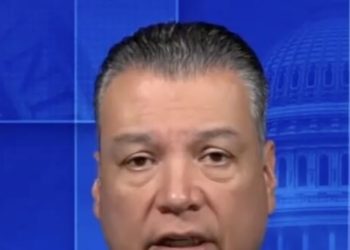Jon Green fell for horse racing as a little boy tagging alongside his Uncle Marty to Monmouth Park on the Jersey Shore. Marty always wore three-piece suits, and after every race he would pull a winning ticket from one of his pockets for his nephew to cash in. Jon didn’t realize at the time that his uncle bought $2 tickets on every horse in every race.
Forty years later, Mr. Green has relied on business fundamentals rather than sleight of hand to make a colt named Sandman one of the favorites to win the 151st running of the Kentucky Derby on Saturday.
He took on partners, rebranded the stable he runs with his father, started a podcast and brought in a social media influencer with nearly 10 million followers to promote Sandman. In a shrinking sport that is losing its athletes and bettors, Mr. Green is among a new generation that is invigorating the game.
Now his business, DJ Stable, is a $30-million-a-year entity that breeds, buys and sells horses in Kentucky, New York and Europe. Mr. Green, who sold his financial planning practice, knows better than most the old racetrack maxim: How do you become a millionaire in horse racing? Start as a billionaire.
“You can make money in horse racing, maybe not every year, if you run it like a business,” said Mr. Green, who has turned a profit over the past seven years. “You’ve got to come up with a strategy and be disciplined in following it. It’s hard work. I went from managing $500 million and working 40 hours a week to a fraction of that and working 60 hours a week.”
In fact, his partners in Sandman, who won the Arkansas Derby in March, illustrate the different ways owners find their way to the winner’s circle. They include Vincent Viola, the owner of the N.H.L.’s Florida Panthers, who plays at the highest levels of horse racing, and West Point Thoroughbreds, whose syndicate model allows multiple partners to take small percentages of a horse. West Point’s founder and president, Terry Finley, does not promise profits, though there have been plenty — West Point invested in the undefeated colt Flightline, who is currently valued at $120 million as a stallion.
“I’m selling a lifestyle and dreams,” Mr. Finley said. “It’s about competition and teamwork. Our structure is for people who miss that feeling of being in the tunnel before they run out for the game.”
Still, the margins are thin, and horse trading is cash intensive. Before the group bought Sandman for $1.2 million last year at a 2-year-old in-training sale, Mr. Green had already pivoted DJ Stable from owning inexpensive horses running at lower-level races into a leaner, high-end outfit. In claiming races, horses are up for sale at an assigned price. His father, Leonard, 88, who is still a practicing accountant, liked the action.
“We might lose a horse for $20,000 in the fourth race, and claim two for $10,000 later in the afternoon,” Jon Green said of DJ, which was established in 1980s.
In 2018, after assuming the day-to-day operations, he branched out by taking interests in stallions, which provide not only a steady revenue stream but also opportunities to breed for the stable’s band of broodmares. He then started putting all DJ Stable’s foals in auction rings rather than keeping them to race. “We sell our most valuable assets,” he said.
In 2023, he sold a champion 2-year-old filly, Wonder Wheel, who earned more than $1.5 million on the racetrack, was sold for $3.2 million and is now a broodmare in Japan.
In a contracting industry, having access to capital is critical. In 2000, nearly 35,000 foals were registered and more than $15 billion was bet on horse racing; in 2024 there were 17,200 foals and $12 billion was bet, according to the Jockey Club, which keeps the stud registry. There are fewer horses and they cost more, which has increasingly led to more partnerships.
“It is hard to compete with the sheikhs and Middle East buyers and the titans of industry,” Mr. Finley said. “They just simply have more money.”
Everything from the advent of sports betting to the number of horse fatalities to the doping scandal that sent 11 people to jail has contributed to the sport’s diminished stature. Since the Horseracing Integrity and Safety Authority, the agency that now regulates the sport, began overseeing an antidoping program in 2023, horse fatalities have been reduced by half, to 0.9 per 1,000 starts.
Mr. Green and Mr. Finley have long been involved in various advocacy groups for the industry. Mr. Green in 2023 started a podcast, “Rail Talk,” which takes on the issues and controversies surrounding the sport. He has recorded more than 85 episodes, with some drawing 60,000 listeners.
“It is a forum for the good and bad of our sport,” he said. “We get as many guests with as many differing perspectives as we can. It is an attempt to expand the sport’s appeal.”
To that end, Mr. Finley gave a social media influencer, Griffin Johnson, a 2.5 percent stake in Sandman to post about the horse and the sport to his legion of Instagram and TikTok followers. Mr. Johnson, 26, grew up on a farm in southern Illinois and has become an enthusiastic member of the colt’s entourage. His posts on Sandman’s journey from fledgling racehorse to the Derby have gotten millions of views from a decidedly younger audience. Mr. Johnson has also earned more than $25,000 of Sandman’s $1 million in purse earnings and an additional gig posting for Churchill Downs Twin Spires’ betting platform.
“I’m creating the narrative of what it’s like to be a horse owner trying to get to the Derby,” Mr. Johnson said. “I got people in my comments sections saying they are going to watch the Derby for the first time ever.”
Mr. Finley is pleased with his investment.
“Our game isn’t dead yet,” he said. “As long as we keep trying to meet people where they are and give them access to all that we are about, we got a chance for another 151 years.”
Joe Drape is a Times reporter writing about how the intersection of money, power and sports impacts our culture.
The post Against the Odds, He Made Thoroughbred Racing a Viable Business appeared first on New York Times.




